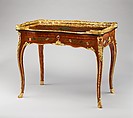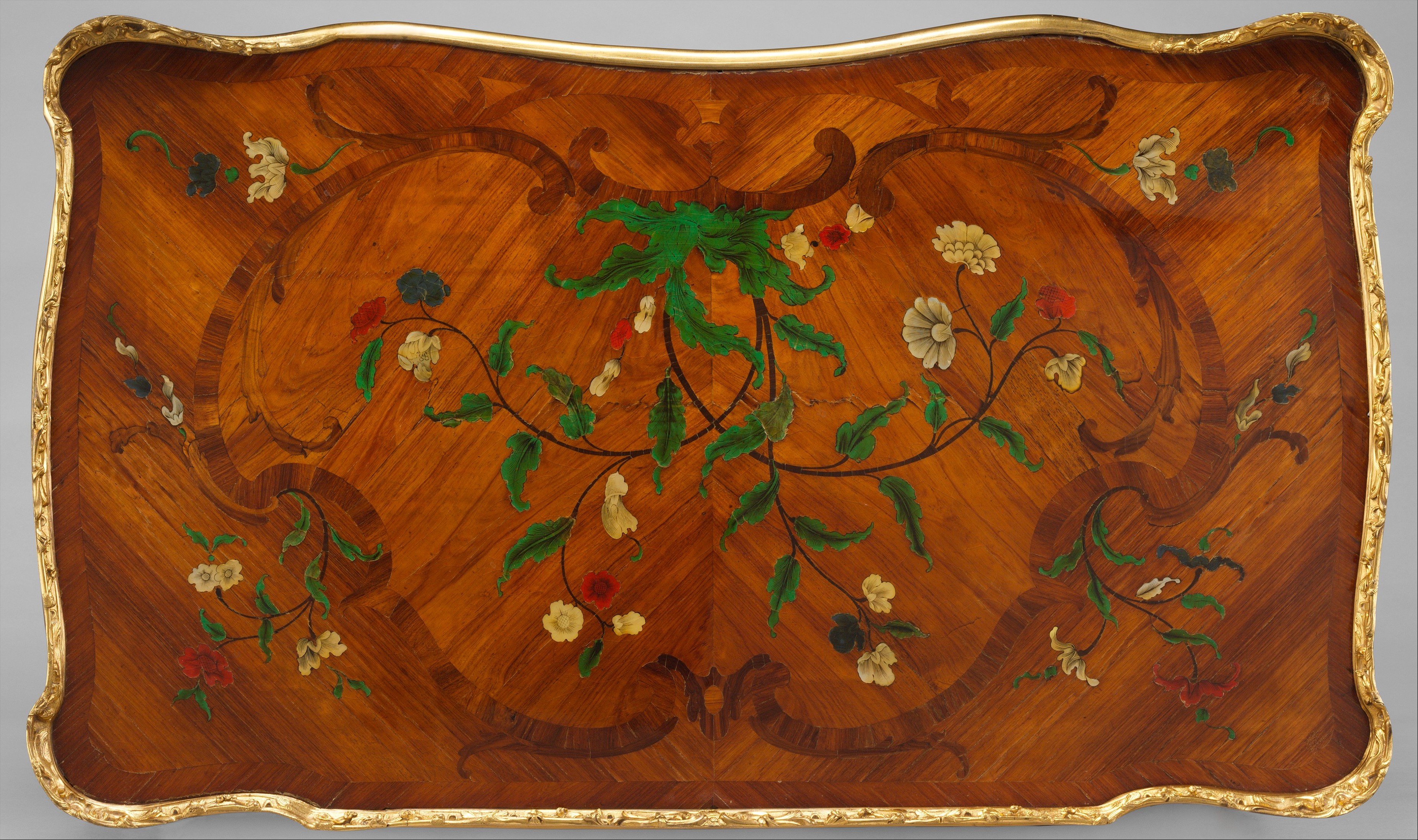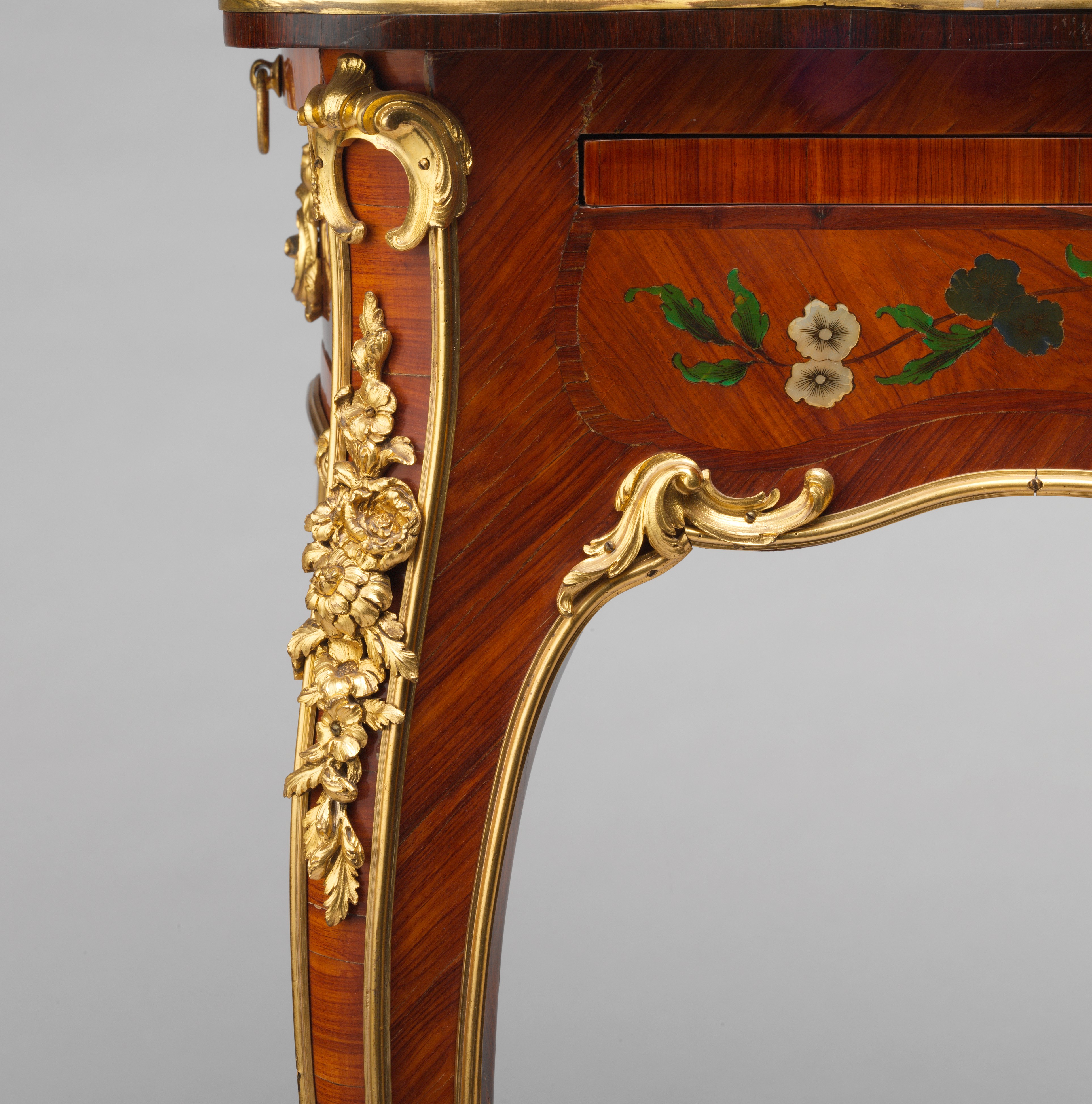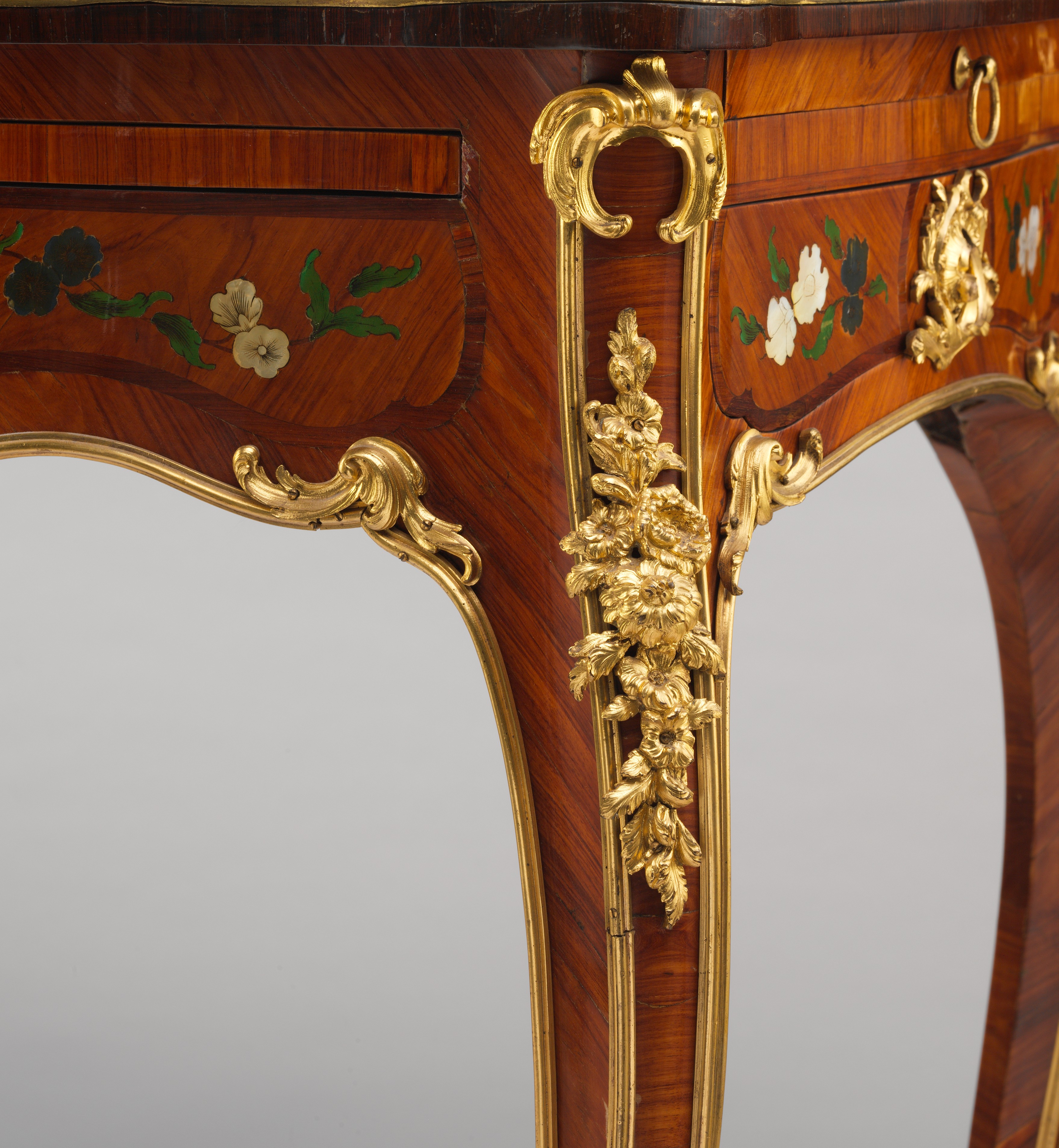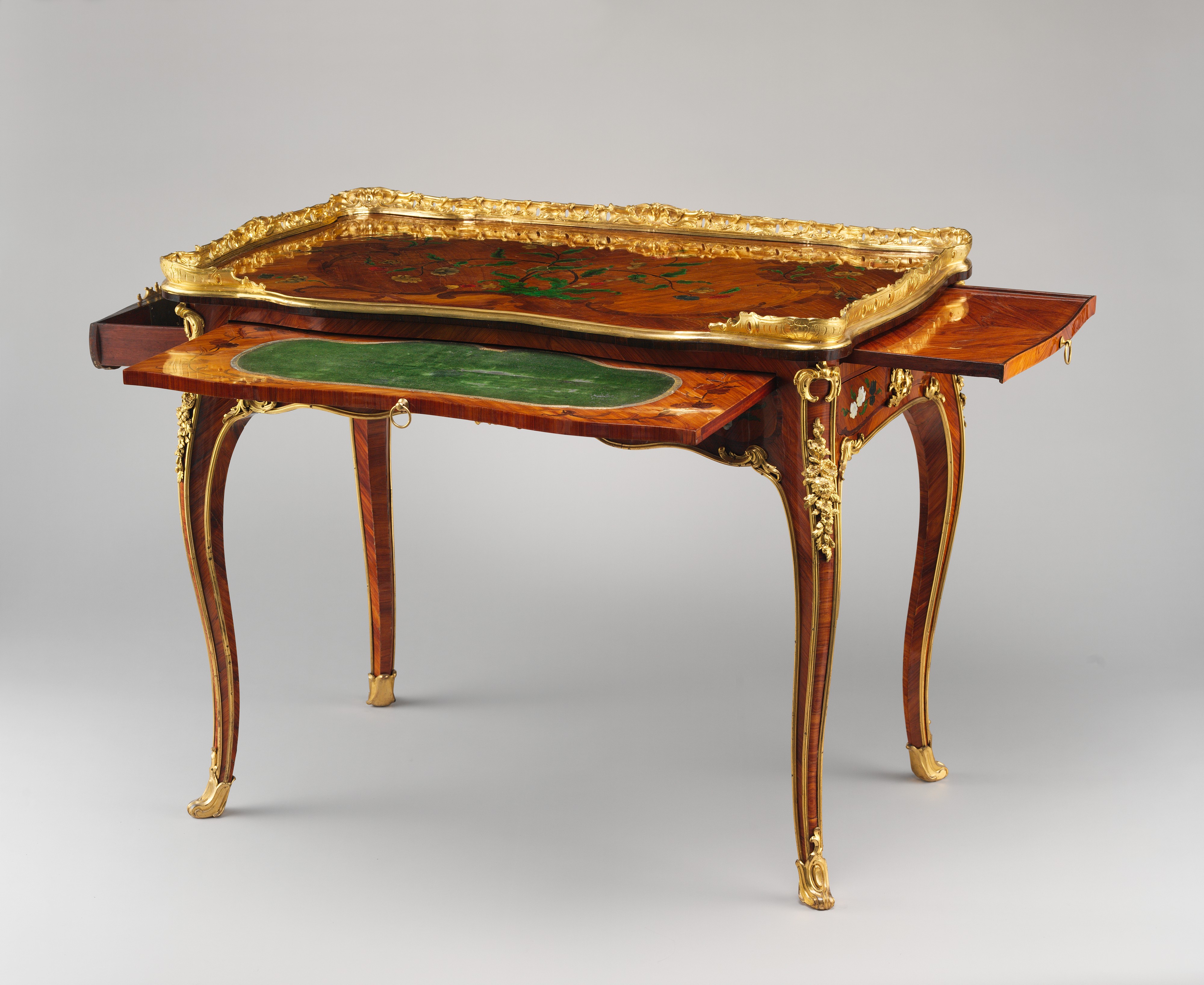Writing table (table à écrire)
Letter writing was a much-practiced activity in eighteenth-century Europe. Horace Walpole, a prolific correspondent himself, reported on September 12, 1775, to his friend Anne Liddell, “There have been known here [in Paris] persons who wrote to one another four times a day; and I was told of one couple, who being always together, and the lover being fond of writing, he placed a screen between them, and then wrote to Madame on t’other side, and flung them over.” In order to accommodate this incessant writing, a variety of tables à écrire, large and small, were created. Often fitted with a leatheror velvet-covered writing surface, and with one or more drawers for the storage of quills and other paraphernalia, these pieces were generally placed in the private rooms of the house. This particularly elegant table is fitted with three pull-out shelves. One at the front encloses a shaped panel of green velvet; two smaller ones at either end, veneered with tulipwood, may have been used for taking dictation. The gilt-bronze gallery emphasizes the serpentine shape of the table’s top and also prevents papers from sliding off.
Known for his stylized floral marquetry of end-cut woods, as seen on the main writing slide, Van Risenburgh rarely relied, as he did here, on colorful inlays of engraved mother-of-pearl and tinted horn. Considered one of the most talented ébénistes active during the reign of Louis XV, Van Risenburgh, who was both the son and father of cabinetmakers of the same name, stamped many of his pieces, including this one, with his initials B.V.R.B.
#2273. Table, Writing
Due to rights restrictions, this image cannot be enlarged, viewed at full screen, or downloaded.
This artwork is meant to be viewed from right to left. Scroll left to view more.
